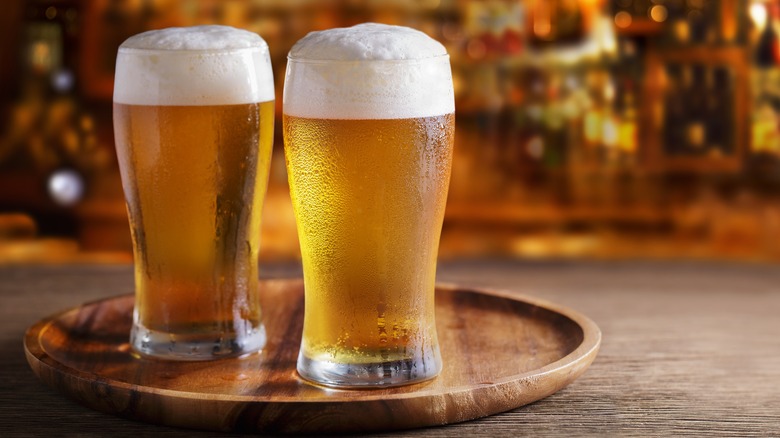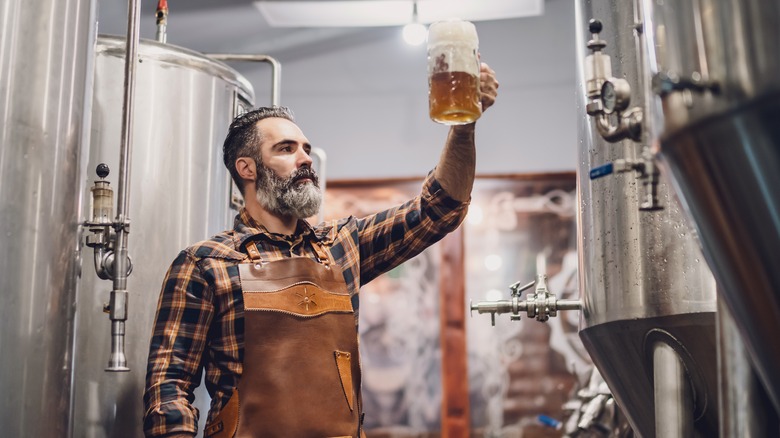How Sugar Impacts The ABV Levels Of Your Beer
There's a common misconception about beer having a lot of sugar, but most beer will have little to no sugar by the time it reaches the pint glass. But that isn't to say that sugar plays no part. In fact, sugar is easily one of the most important ingredients in beer — despite its absence from the final product. That's because sugar is what yeast consumes to produce alcohol. Without any sugar, your brew would be nonalcoholic.
This isn't specific to beer, either. Without sugar (or yeast), there would be no alcohol. As you might imagine, the important role that sugar plays in fermentation means you can impact the final product by tinkering with the sugar content. There are a lot of essential tips that novice homebrewers need to keep in mind if they want a successful batch of beer and a beer's gravity ranks high among them.
Gravity doesn't mean what it usually means in this context. Instead of providing a theory of why apples fall down and not up, here gravity refers to the sugar content of the mash. The brewer uses a hydrometer to measure the density of the water and, in so doing, measures the sugar content. Original gravity refers to the measurement before fermentation, specific gravity refers to measurements taken during fermentation, and final gravity is your desired goal. The more sugar in the mash, the higher the gravity, which means the gravity will always decrease as fermentation progresses.
Brewing higher ABV beers requires more sugar
Higher gravity beers, like imperial stouts, whiskey ales, and barrel-aged beer, will almost always have a higher ABV in the end because there is more fuel for the yeast to convert into alcohol. In low-gravity beers, like pilsners and pale ales, the yeast will devour the sugar, produce a small amount of alcohol, and stop when they run out of food. In high-gravity beers, the yeast will keep the alcohol factory going for longer. The reality is a bit more complicated than that, but the basic tenet remains the same.
Things get more complex when you take the yeast into consideration. Like athletes or cars, some strains of yeast are stronger than others. If you try to get a weak yeast strain to take on a high-gravity mash you're going to get a subpar product since they just can't handle the stress. There are plenty of high-gravity yeast strains that are fit for the job, the brewer just needs to pick the right one.
The longer the fermentation process continues, the less sugar is left in the beer. Once the mash hits the desired final gravity, the brewer will stop the fermentation process which may leave small amounts of residual sugar but to create a dry beer you need to let beer ferment as long as possible. Although some beer styles might call for additional sugar to be added, most of the fermentable sugars come from the grains themselves. By comparison, hard seltzers are commonly made using simple table sugar.

